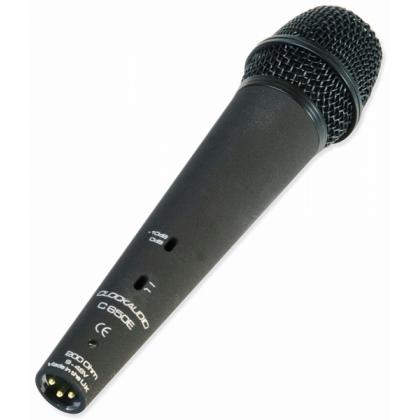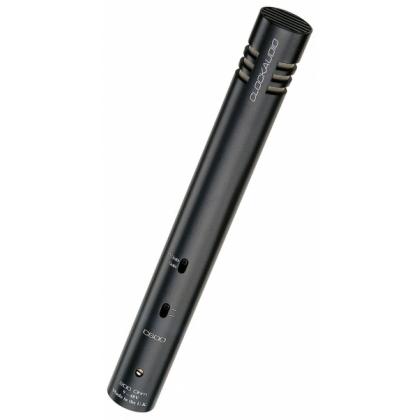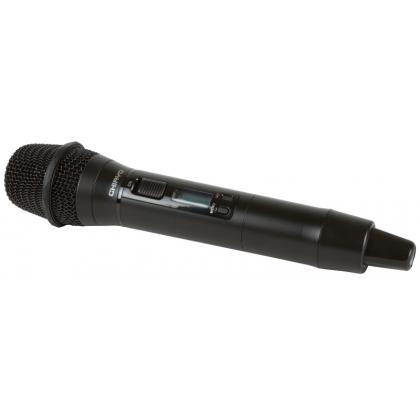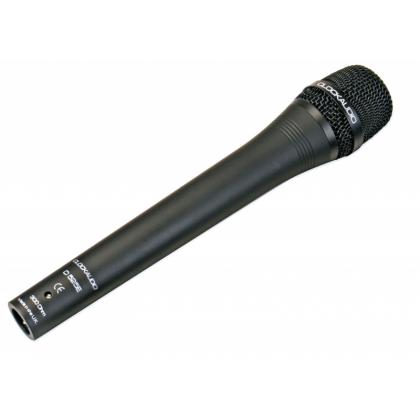What is a handheld microphone?
HowToAV speak to Tom Colman engineer at Shure UK. He takes a look at handheld microphones, what applications they should be used in, how best to use them and some helpful tips on microphone technique.
What is a handheld microphone?
Handheld microphones are designed to be held in the hand, but they can also be clipped onto a microphone stand whilst someone sings, gives a speech, plays guitar etc. Handheld microphones pick up sound directly from the mouth this picks up less background noise however, it does require a good amount of microphone technique.
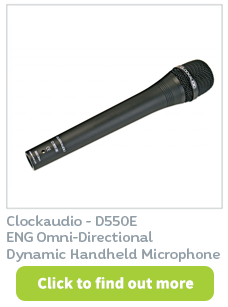 The importance of microphone technique:
The importance of microphone technique:
One thing that often occurs when someone uses a handheld microphone for the first time, is once they start to hear themselves through the local loudspeakers as the loudspeakers amplify their own voice, they find it a bit unsettling and then start to pull the microphone away from themselves. At this point the sound engineer will raise the level of audio so the other person can hear themselves again which once again results in pulling the microphone away. If this cycle repeats over and over, you can end up getting a feedback loop – that sharp piercing sound you get within an audio system. Also if you move the microphone left and right in front of your face, then the sound won’t be picked up properly by the microphone. So it does require a great degree of microphone technique.
What is a Wired Handheld Microphone?
Wired microphones convert sound into electrical audio signal that is sent through a cable to a sound system. A wired microphone means you get hassle-free setup, but you are restricted by the length of the cable on which the microphone is connected to.
What is a Wireless Handheld Microphone?
Wireless microphones convert sound into radio signals which are sent from a transmitter to a receiver which then sends it to the sound system. A wireless microphone gives you more flexability and easier mobility, but will typically cost more than wired.
Key components of a Wireless Handheld Microphone
The main components of a wireless mic system are:
- Microphone
- Transmitter
- Reciever
Wireless Microphones come in various styles, each with a specific purpose. The most common however is the handheld mic.
For a wireless microphone to work, transmitters are required to send audio signal to be outputted as live sound. Handheld wireless mics however do not need a separate transmitter as there is one built in to the unit.
As well as a transmitter a reciever is a main component needed in a wireless mic system. Receivers are the electronic devices that receives radio signal from the transmitter and converts it to live audio that you hear through the sound system. They are either single or multi-channel receivers, it depends on how many wireless mics you will be using at the same time.
Benefits of Wireless Microphones over wired:
The most obvious benefit of wireless is the flexability to move without the worry of tripping over mic cords and cables. Another benefit is they provide a much cleaner sound compared to wired microphones.
Want help with Microphones or Audio system design?
 CIE is one of the UK's leading and most innovative professional AV distributors and is a leading provider of AV professional systems and devices.
CIE is one of the UK's leading and most innovative professional AV distributors and is a leading provider of AV professional systems and devices.
With over 50 years experience in supply and system design for many of the UK's largest, high profile audio projects, our AV experts provide a unique level of technical support and customer service.
Call the CIE AV experts now on T. 0115 9770075 or email us at [email protected]
 Got a question for CIE's HowToAV team?..
Got a question for CIE's HowToAV team?..
HowToAV.tv provides a whole host of tips, tricks and technology know-how for the professional audio visual industry.
If you have a question for our AV experts, please contact us now.
Subscribe to our YouTube channel now at howtoav.tv for all the latest video casts or send us your questions to [email protected]
